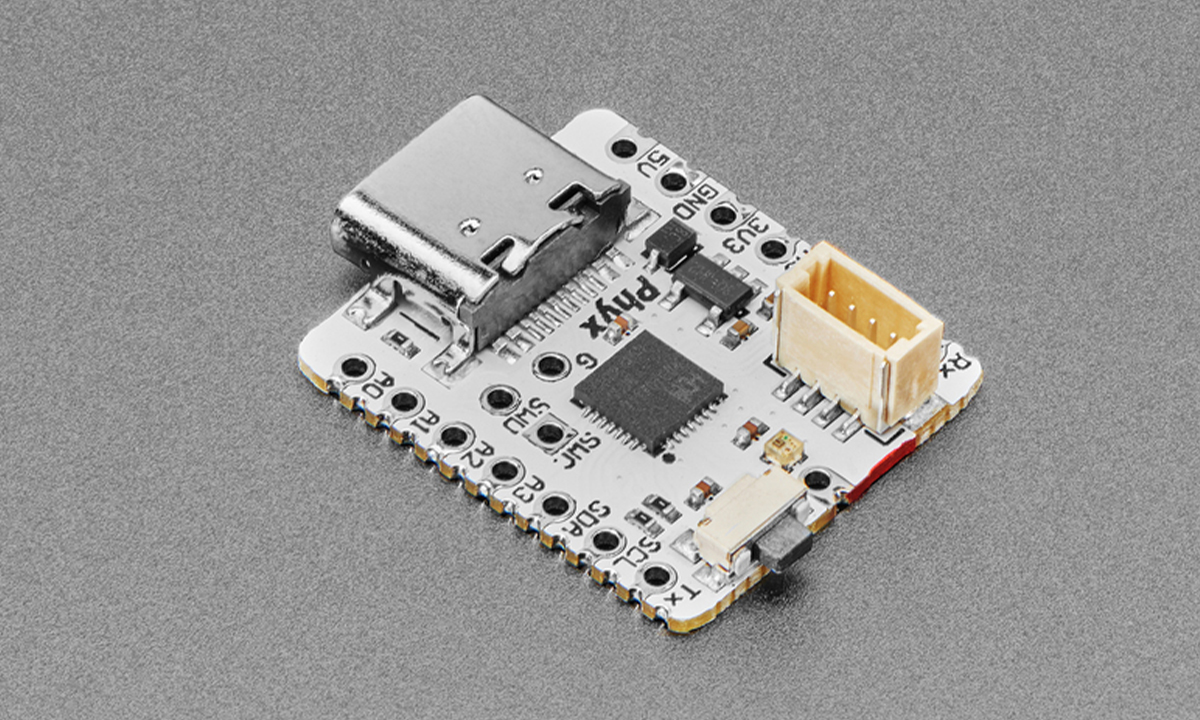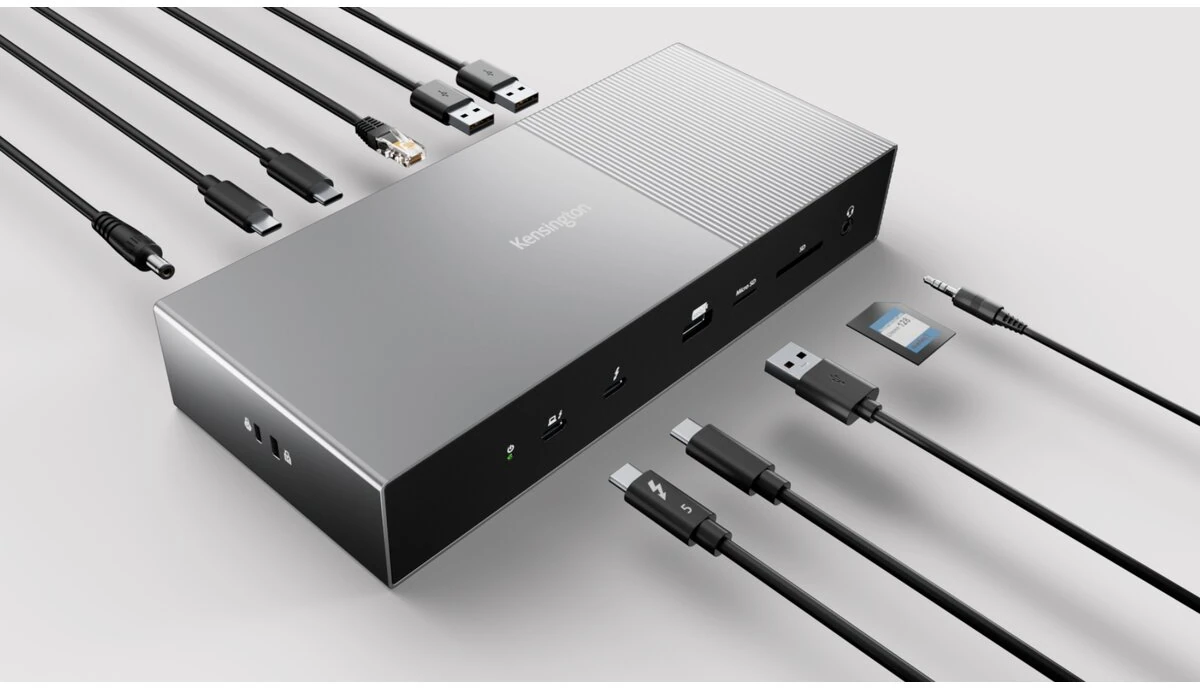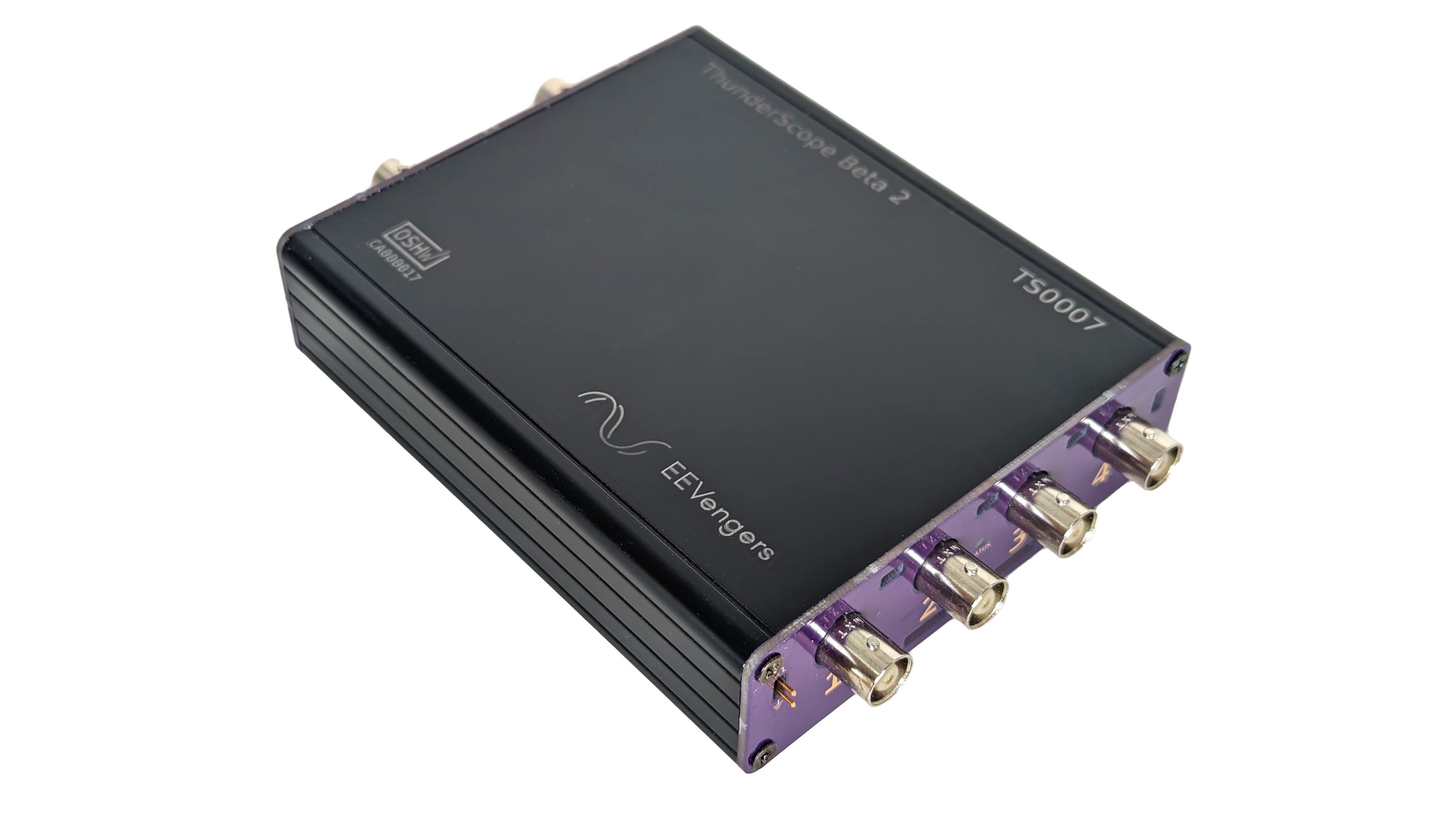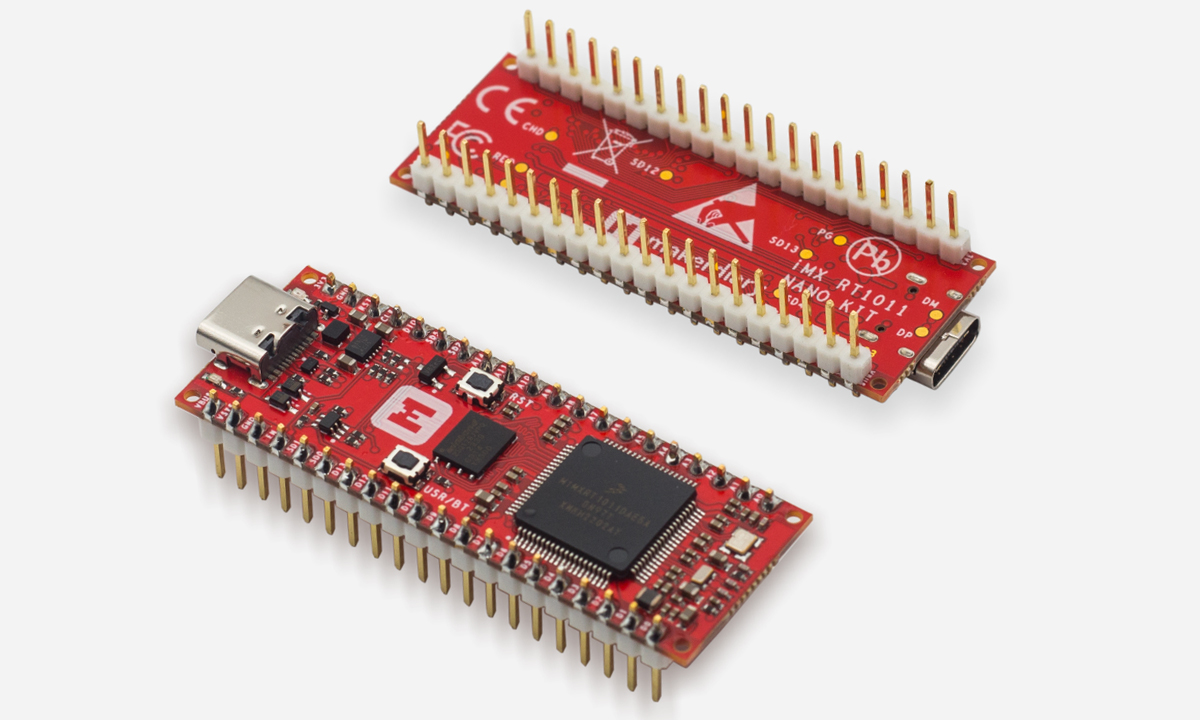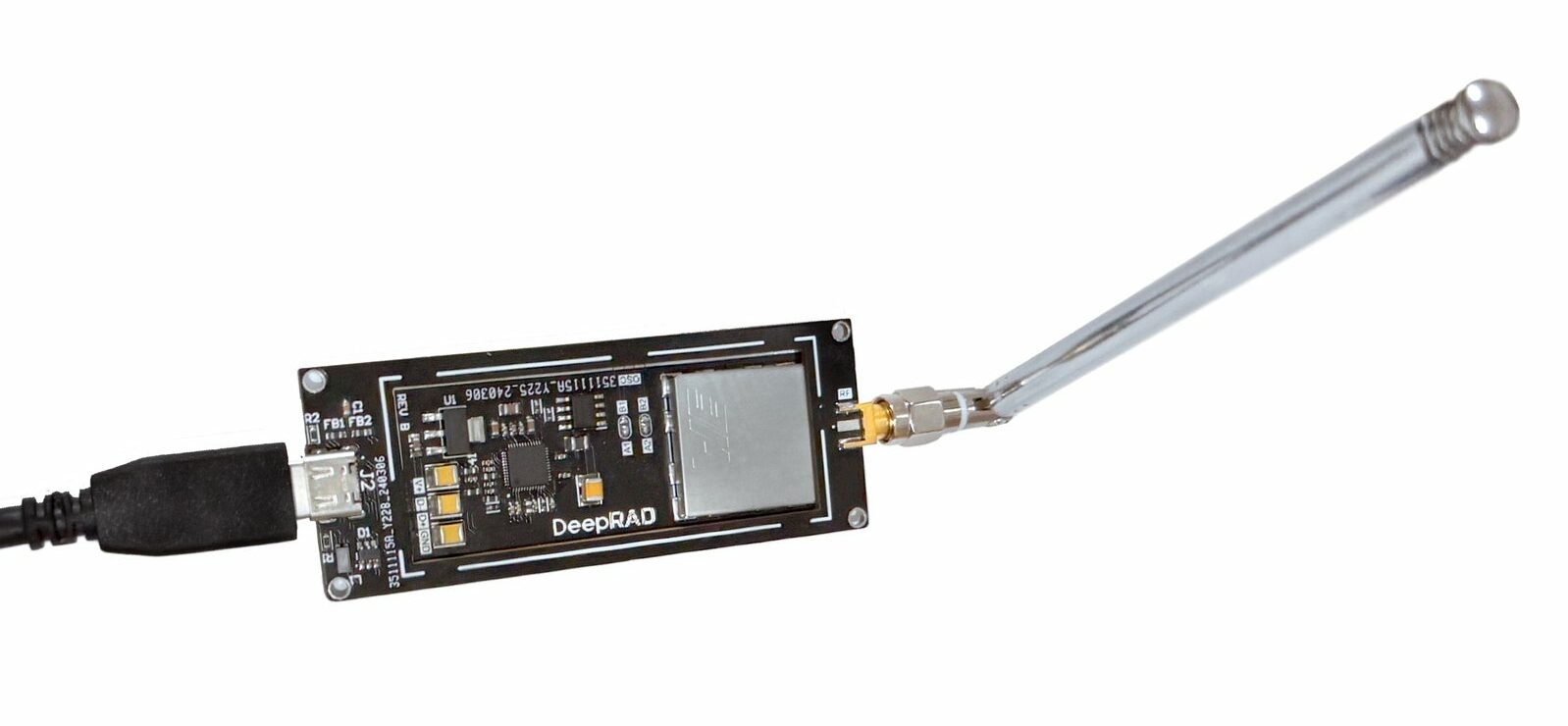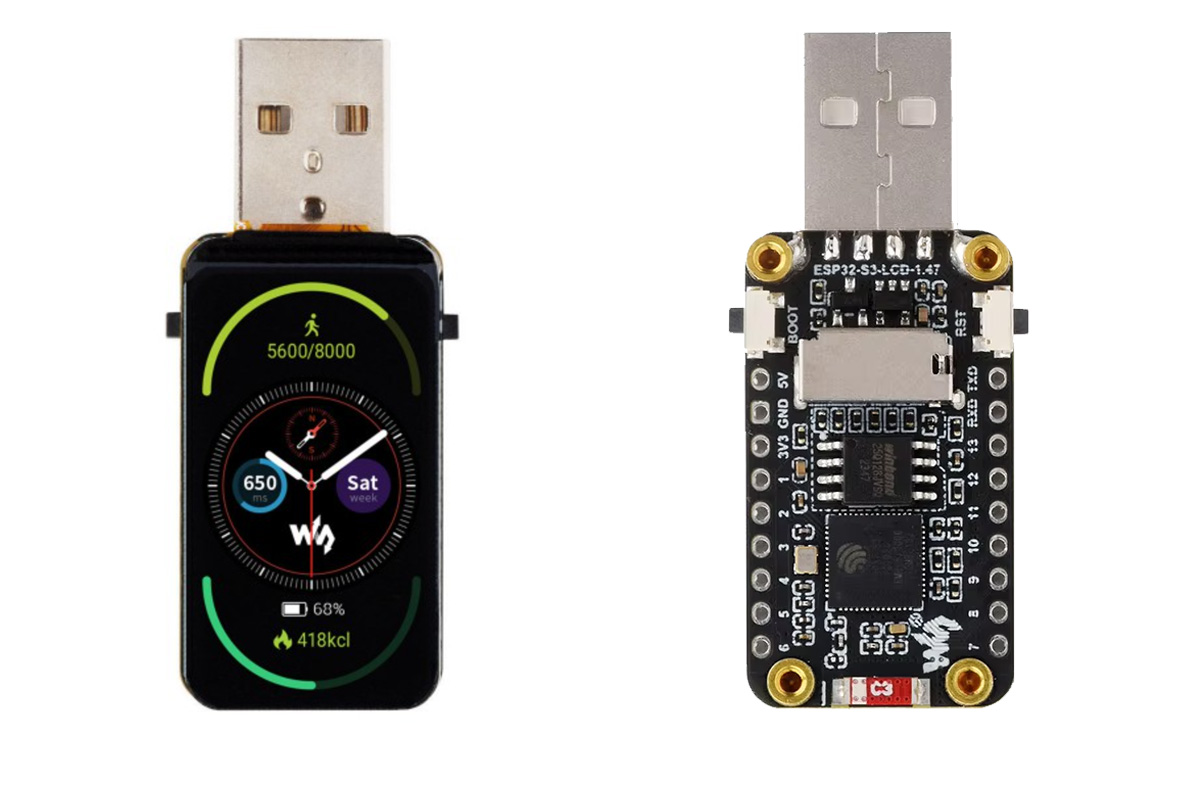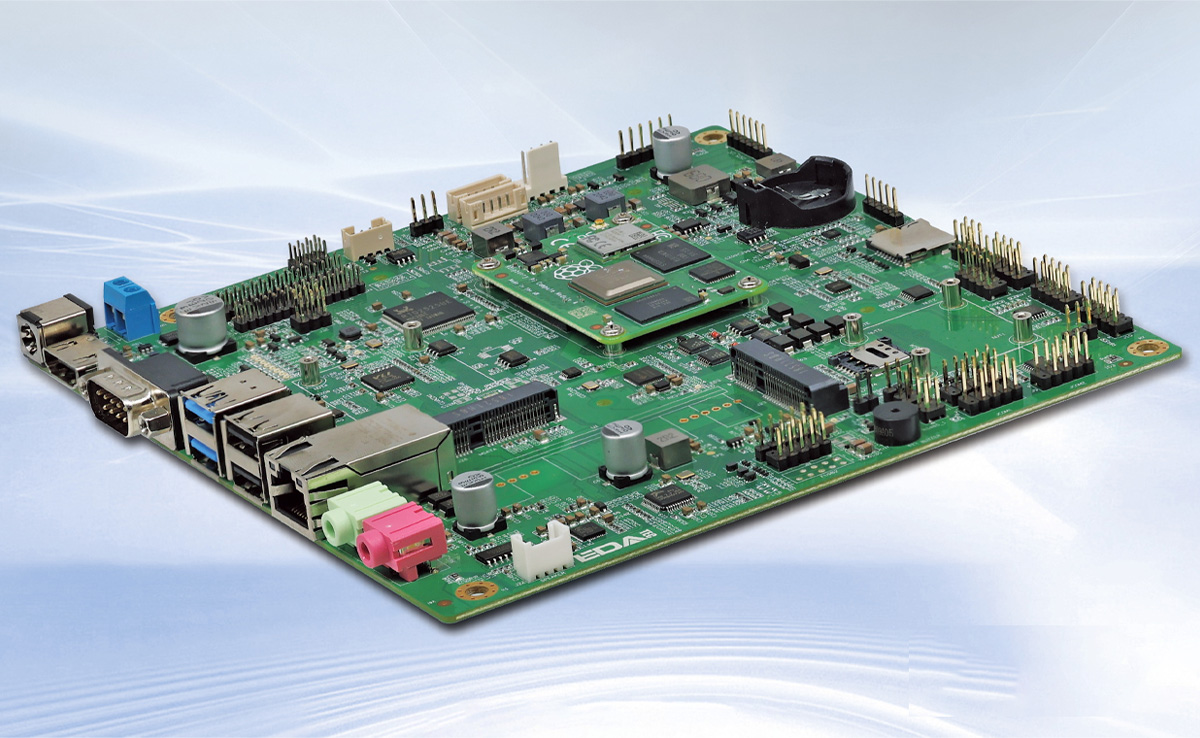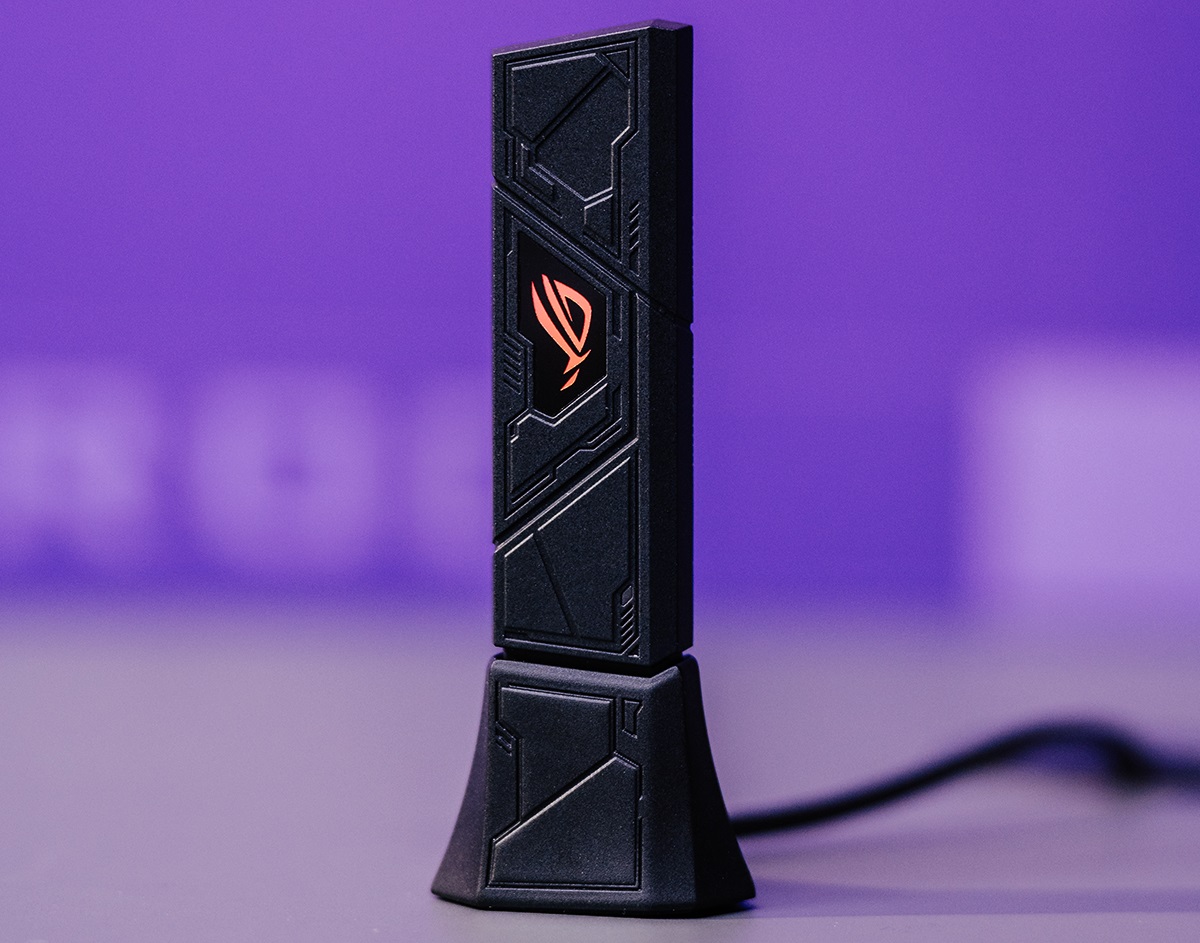The LANA-TNY is a compact development board created by Phyx and built around the CH32V203 RISC-V microcontroller. It offers a low-cost solution for embedded development and features a built-in USB bootloader, eliminating the need for an external programmer to flash the firmware. With a USB-C connector and a minimalist design, the board provides essential components to start development quickly. At its core, the Phyx LANA-TNY is powered by the CH32V203G6U6, a 32-bit RISC-V microcontroller from WCH Electronics, capable of running up to 144MHz with 1-cycle multiply/divide operations. It includes 10KB of SRAM, 32KB of single-cycle Flash, and 224KB of additional external flash for program or data storage, though the external memory operates at a slower speed. The CH32V203 microcontroller supports a range of peripherals, including ADC, timers, USB devices, UART, I2C, and SPI, making it suitable for a wide variety of embedded applications. Designed in the style of Adafruit’s QT […]
Thunderbolt 5 devices are starting to show up with OWC portable SSD and Kensington docking station
Thunderbolt 5 was first unveiled last year with promises of 120 Gbps bandwidth and support for multiple 8K monitors. The good news is that the first Thunderbolt 5-compliant devices are now coming to market. There’s not too much to choose from for now, but we need to start somewhere, and the OWC Envoy Ultra portable SSD ($299.99 and up) and the Kensington SD5000T5 EQ Thunderbolt™ 5 Triple 4K Docking Station with 140W PD ($399.99) – also found on Amazon – are some of the first Thunderbolt 5 devices to make it to market. OWC Enjoy Ultra Thunderbolt 5 portable SSD Key features: Speed over 6000MB/sm or up to twice faster than Thunderbolt 4 and USB4 Capacity – 2TB or 4TB Compatibility – Macs, PCs, iPad Pros, Chromebooks, and Surface devices with a Thunderbolt 3 to 5 port, or USB4 port Rugged design – Waterproof, dustproof, and crushproof Power Supply – […]
ThunderScope is an open-source Thunderbolt and PCIe oscilloscope with a 1 GS/s data sampling rate (Crowdfunding)
The ThunderScope is an open-source, Thunderbolt/USB4 and PCIe oscilloscope with a sampling rate of up to 1 GS/s. It is portable, presents an affordable, open-source alternative to expensive bench-top and PC-based scopes, and delivers a higher sampling rate than most USB oscilloscopes. ThunderScope streams sample data to your computer for processing and analysis, unlike traditional oscilloscopes which “are limited by their built-in processing capabilities and cramped user interfaces.” It uses the fastest available interface, Thunderbolt, to stream data, allowing it to use your computer’s full potential. ThunderScope is “the only scope that will get better every time you upgrade your computer.” The Thunderbolt oscilloscope is based on AMD’s Artix 7 XC7A35T-2CSG325C FPGA. It supports up to four channels and a full analog bandwidth of 500 MHz (with the anti-aliasing filter disabled). It doesn’t require an external power source, as it is powered via the Thunderbolt port. It comes in a […]
$15 Makerdiary iMX RT1011 Nano Kit runs Zephyr RTOS on 500 MHz NXP iMX RT1011 crossover MCU
Makerdiary’s iMX RT1011 Nano Kit is a prototyping board featuring the NXP iMX RT1011 Cortex-M7 Crossover MCU running Zephyr RTOS. It offers 128 KB of on-chip RAM, configurable as TCM or general-purpose memory, and supports high-speed USB, UART, SPI, I2C, SAI, PWM, GPIO, and ADC, making it suitable for a variety of embedded applications. The board also includes a 128 Mbit external QSPI flash with XIP support, flexible power management, a programmable LED and Button, and a USB-C connector. It features a dual-row 40-pin layout (DIP/SMT) with up to 33 multi-function GPIO pins, 15 of which can be used as ADC inputs, along with a Serial Wire Debug (SWD) port. Optional pre-soldered headers are available for added flexibility. We previously covered other iMX RT1011-based development boards, such as the Olimex RT1010-Py running MicroPython and Adafruit Metro M7 with CircuitPython firmware. Be sure to check them out if you’re interested. Makerdiary’s […]
DeepRad is a cheap, modular SDR receiver based on the RTL-SDR (Crowdfunding)
DeepRad is a software-defined radio (SDR) receiver built in the RTL-SDR form factor. The modular SDR receiver offers advantages over other RTL-SDR-based devices which make it easier to integrate with other components and build custom solutions for your specific applications. The DeepRad SDR receiver is based on the RTL-SDR dongle and features the same Realtek RTL2832U demodulator chip with an R860T tuner. The module features D+ and D- pins for USB connection, V+ for 5 V power supply, solderable jumpers for oscillator selection, an RF pin for antenna connection, and 8 shield pin connectors for shielding and support. The module is targeted at custom designs, with the user free to choose the best components for their application. It is as versatile as a typical SDR receiver, with applications ranging from FM radio listening to aircraft tracking. We have previously covered other RTL-SDR receivers, such as the KrakenSDR and the RTL-SDR […]
ESP32-S3 USB dongle integrates 1.47-inch TFT LCD display
Waveshare ESP32-S3-LCD-1.47 is an ESP32-S3 USB dongle with Wi-Fi, Bluetooth, high-capacity Flash and PSRAM, and a 1.47-inch LCD. Additionally, it has an onboard microSD card slot used for storage and some RGB LEDs for visual feedback. All these features make this tiny device suitable for applications like interactive displays, IoT devices, hardware pentesting, and more. Previously we have written about the LILYGO T-HMI a similar ESP32-S3-based development board built for HMI applications, as well as the ESP32-S3-Touch-LCD-4.3B and Waveshare ESP32-S3 LCD Driver Board, but it must be the first time we’ve come across a USB dongle-like ESP32-S3 board with an integrated display. ESP32-S3-LCD-1.47 specifications: Wireless MCU – Espressif Systems ESP32-S3R8 CPU – Dual-core Tensilica LX7 @ up to 240 MHz with vector instructions for AI acceleration. Memory – 512KB RAM, 8MB PSRAM Storage – 384KB ROM Connectivity – 2.4 GHz WiFi 4 and Bluetooth 5.0 LE with support for long-range, up […]
EDATEC ED-SBC2300 – A Raspberry Pi CM4-powered industrial Mini-ITX motherboard
The EDATEC ED-SBC2300 is an industrial mini-ITX motherboard built around the Raspberry Pi CM4. The motherboard offers various storage options including eMMC flash, microSD card, and mSATA SSD. It supports dual displays (HDMI + LVDS or HDMI + eDP with touchscreen), offers diverse connectivity with USB, GbE port, RS232, RS485, and GPIO, and boasts integrated security features like RTC, EEPROM, and crypto authentication. The board supports a wide 9V-36V DC power input and PoE is also an option through an add-on board. With its compact size, flexible I/O, and industrial-grade features, the ED-SBC2300 series suits applications like kiosks, digital signage, industrial automation, and IoT devices. Previously we have written about similar products from EDATEC including the RPI CM4-based industrial computer, the EDATEC ED-HMI2320-156C fanless panel PC, and the EDATEC ED-HMI2120-101C, also an industrial panel PC with an 10.1-inch capacitive touchscreen. Feel free to check those out if you are interested […]
ASUS ROG USB-BE92 is a USB 3.2 Gen1 WiFi 7 BE6500 adapter
The ASUS ROG USB-BE92 is a USB 3.2 Gen1-based WiFi 7 adapter that supports IEEE 802.11a/b/n/ac/ax/be standards. It operates in the 2.4GHz, 5GHz, and 6GHz bands, with dual internal antennas for improved signal reception. The device is designed for high-throughput wireless performance in BE6500 networks, supporting MU-MIMO technology. Primarily targeted for Windows 10 and 11 platforms, it enables next-generation wireless connectivity when paired with WiFi 7 routers and compatible client devices. We previously discussed several WiFi 7 modules, SBCs, and chipsets including Compex WLE7002E25, 8Devices Noni, Banana Pi BPI-R4, Fibocom FG370, and MediaTek’s Filogic 860 and Filogic 360. These modules offer different features and performance levels, so I recommend checking them out if you’re interested in WiFi 7 technology. The ASUS ROC USB-BE92 is one of the first WiFi 7 USB dongles that made it to market. ASUS ROG-USB-BE92 specifications: Wi-Fi Bandwidth – Tri-band BE6500 Top Speed – Max 2880Mbps […]


